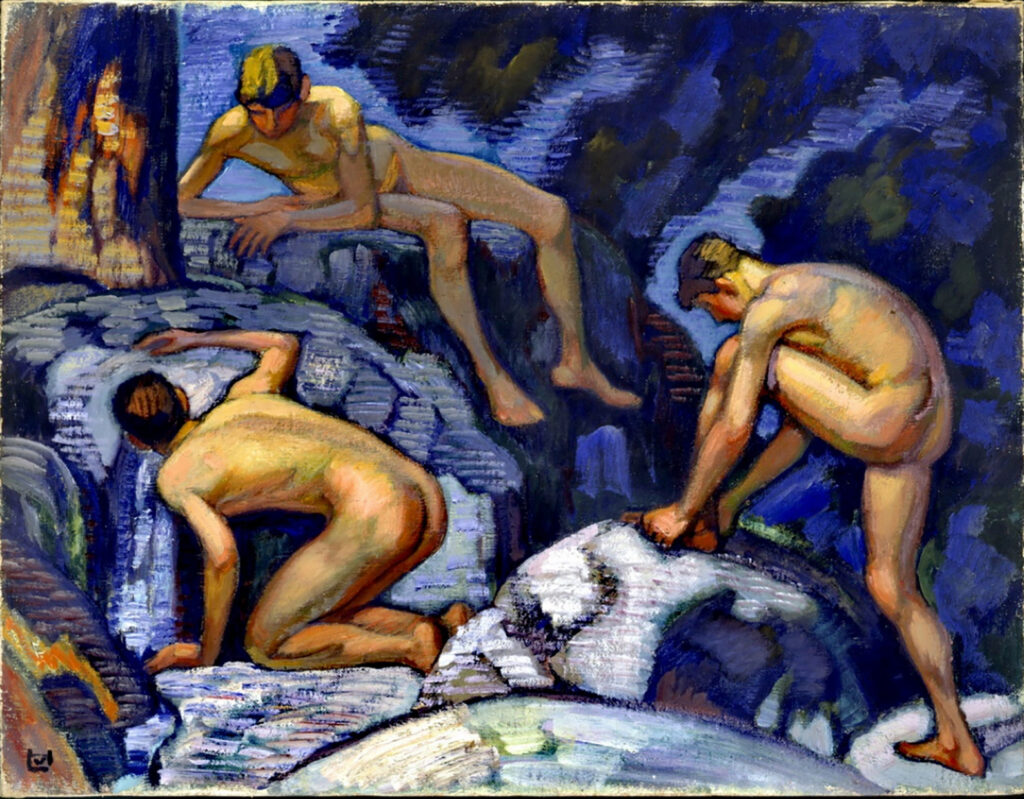“When, in 1931, Thomas Mann received a newspaper questionnaire asking about his “first love,” he replied, in essence, “Read Tonio Kröger.”” (Alex Ross, The New Yorker, Jan 24 2022)
Tonio Kröger is a novella written in 1901 and published in 1903, shortly after the publication of Buddenbrooks which made Thomas Mann famous at the age of 25 and won him the Nobel Prize in 1929.
His diaries, published in the 1980s and 1990s, show the omnipresence of his homosexual desires, particularly towards several young men who crossed his path.
David Luke, in the introduction to his excellent translation of Tonio Kröger and several other short stories published under the title Death in Venice and Other Stories (Bantam Dell, 1988): “The fact that in later life Mann so often declared Tonio Kröger to be his favorite among his works and even (which is not quite the same thing) his best work is partly to be explained by the story’s close association with these youthful loves.”
Die Quelle (Spring), painting by Ludwig von Hofmann, which Thomas Mann bought from the latter in 1914 and which hung on the wall of his various offices until his death.

Die Quelle (Le printemps), tableau de Ludwig von Hofmann, que Thomas Mann acheta à ce dernier en 1914 et qui fut accroché au mur de ses différents bureaux jusqu’à sa mort.
« Lorsqu’en 1931 Thomas Mann reçut un questionnaire d’un journal lui demandant quel était son « premier amour », il répondit en substance : « Lisez Tonio Kröger » » (Alex Ross, The New Yorker, 24 janvier 2022).
Tonio Kröger est une nouvelle écrite par Thomas Mann en 1901 et publiée en 1903, peu après la publication de Buddenbrooks qui le rendit célèbre à 25 ans et lui valut le Prix Nobel en 1929.
Les journaux de Thomas Mann, publiés dans les années 1980 et 1990, montrent l’omniprésence de ses désirs homosexuels, en particulier envers plusieurs jeunes hommes qui croisèrent sa vie.
David Luke, dans l’introduction de son excellente traduction de plusieurs nouvelles de Thomas Mann parue sous le titre de Death in Venice and Other Stories (Bantam Dell, 1988) : « Le fait que, plus tard dans sa vie, Mann ait si souvent déclaré que Tonio Kröger était son œuvre préférée et même (ce qui n’est pas tout à fait la même chose) sa meilleure œuvre, s’explique en partie par l’étroite association de l’histoire avec ces amours de jeunes gens. »
Gabriel François
